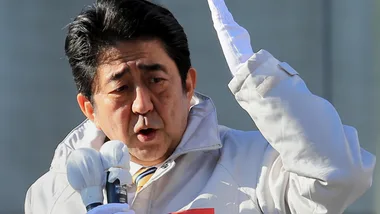
Tokyo Station and Tokyo Station Hotel.
1. Tokyo Station Hotel, Marunouchi
There are more glass-tower hotels in Tokyo than you can poke a stick at, but only one Tokyo Station Hotel – a beautiful heritage building, which has witnessed 100 years of Japanese history.
In the lobby of this grand, but understated hotel is a door marked “Private”. Behind it lies the railway waiting room of Japan’s Imperial Family. Not that a member of the Imperial Family would ever have to wait for a train, one suspects, but the suite is probably a convenient place to gather one’s imperial thoughts, be greeted by one’s officials and allow the flunkeys to deal discreetly with the imperial luggage. So as guests make their way across the marble floor of the hotel lobby to the reception, there’s always the faint possibility that the most revered family in Japan is just a few metres away.
Opened in 1915, the hotel, which is part of the imposing red brick Tokyo Station, is at one end of Gyoko Dori Avenue, the equivalent of The Mall in London. At the other end is the Imperial Palace. Not surprisingly, the hotel forecourt is where new ambassadors start their journey in horse-drawn carriages before presenting their credentials to the Emperor. And since Japan embraced the West and built its railways in the late 19the century, Tokyo Station has become the place, where nearly everyone who is anyone has arrived.
Visitors to Japan’s capital couldn’t stay at a more convenient location. When they arrive by train from Narita International Airport, all they have to do is make their way to the hotel via an escalator or lift. If in doubt, a call to the hotel’s guest services will soon have a bellboy or girl in charming 1930s uniform to help you out.
With only 150 rooms and suites, the hotel has the atmosphere of a boutique property, but the elegance one associates with the world’s elite hotels, thanks to British interior design consultants Richmond International, who have created an ambience of refined luxury. There’s an underlying restraint of “less is more”, except when it comes to quality. The furniture, carpets, lighting, beds, sheets and pillows, cutlery and tablecloths, and even the paint finishes are platinum-plated, creating an overall impression of immense comfort and subtle sophistication. Even the courtesy pen in the room looks and writes like a Mont Blanc.
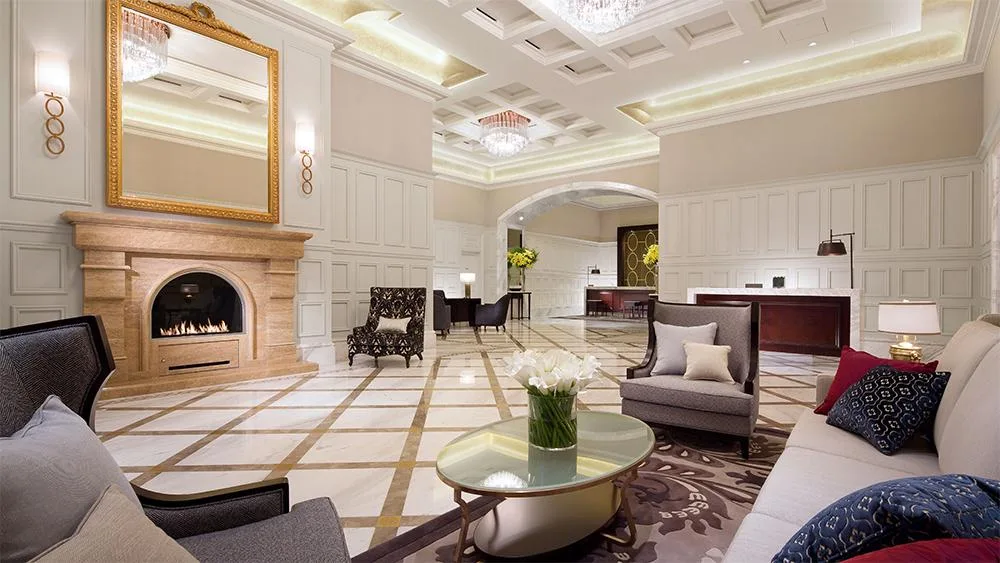
The Station Hotel lobby with “that” door, just before the yellow flowers on the left
Many of the suites and rooms overlook Gyoko Dori Avenue, others have views over the railway station, but what a station it is! Designed by Dr Kingo Tatsuno, now regarded as a founding father of modern Japanese architecture, this building has been declared an Important National Cultural Asset and earthquake-proofed at a cost of 50 billion yen or $500 million. Several of the hotel rooms with views over the station look into the interior of one of the building’s domes, which is as beautifully decorated as any dome in a Florentine cathedral.
Breakfast is held in a vaulted space, on the fourth floor, inside the station’s central dome, which is the size of a ballroom at Versailles. The breakfast buffet is equally spectacular with more than 130 offerings of the freshest food, much of it presented as if it were to be featured in a still-life painting.
There are several restaurants and bars. Blanc Rouge is the French option, but highly recommended is Cantonese En Ken Taskase, run by a top chef of the same name. There is also a large, well-equipped gym and spa.
The Japanese attention to detail creates a feeling of harmony and wellbeing at this beautiful hotel and the experience a guest receives is well worth the rack rate of $330 for an entry room, even though a discounted rate can be as little as $270.

A room with a view at Tokyo Station Hotel. Detail of one of the domes of Tokyo Station. Photo: Mike Dolan.
One minor niggle, this hotel has long corridors. Beautiful corridors, maybe, but there’s no denying they are long. There is a plus, the pile of the carpet is so thick, they give a little extra spring to every step you take. But those who don’t like to take an evening stroll back to their room should ask to be accommodated as close as possible to the lifts.
Tokyo Station Hotel, (81) 3 5220 1112, 1-9-1 Marunouchi, Chiyoda-ku.
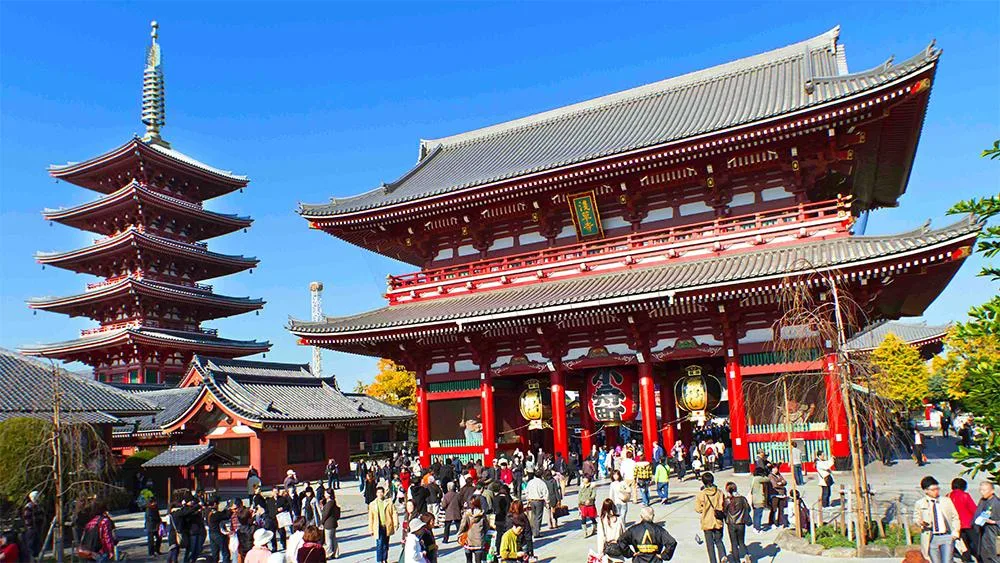
Senso-ji Temple is next to Tokyo’s oldest street of shops. Photo: Tokyo Convention & Visitors Bureau.
2. Senso-ji Temple, Asakusa, Taito
The approach to this sacred site is as spectacular as the Buddhist temple itself. From the vermilion-lacquered Thunder Gate, a 250-metre long street of shops – Japan’s oldest – leads to the Treasure House Gate and the beautiful shrine. Before you arrive at the spiritual, however, you have to deal with the commercial – 90 little stores, originally created in the early 1700s, but rebuilt after being bombed during World War II. Everything from hair accessosries, kimonos, Japanese clogs, wooden dolls and chiyogami (coloured paper), folk art products, Japanese confectionary and patisserie, sushi and all types of edible seaweeds can be found here. As you approach the main temple, you pass a five-storey pagoda, several shrines and small contemplation gardens. It’s one of the busiest tourist spots in Tokyo, but well worth a visit and a good place to pick up souvenirs.
The Senso-ji Temple is a five-minute walk from Asakusa subway station.
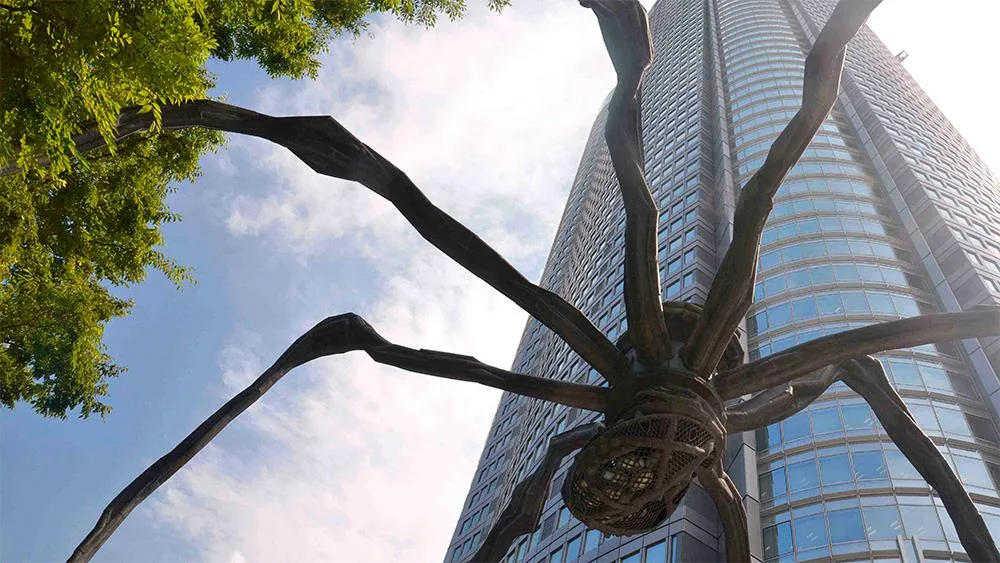
Maman: the giant spider sculpture by Louise Bourgoise at the base of the Mori Tower. Photo: Mike Dolan.
3. Mori Tower, Roppongi Hills, Minato
Whether you visit for the city views or the art, this is a fascinating complex. From the Mori Tower’s 54th floor Sky Deck, you get one of the best views of Tokyo and, on a clear day, Mt Fuji can be seen dominating the western horizon. Japanese courting couples prefer to visit the 238-metre high tower after dark when Tokyo’s lights twinkle from horizon to horizon. At the base of the tower, in Roku Roku Plaza, is French artist Louise Bourgeois’ scary 10-metre high bronze Maman sculpture of a spider with eggs. Arachnphobes steer clear. With its shaded seating areas and water features, Roku Roku Plaza is great place for people spotting. On the level below the Sky Deck, you’ll find the Mori Art Museum, one of Japan’s top contemporary art galleries. On show, until August 12, 2014, is the visually stunning and thought-provoking multi-media exhibition Go Between – The World Seen Through Children that includes works by Australian Tracey Moffatt. Besides the art and the views, there are around 200 shopping, dining and drinking establishments.
Admission to the Mori Tower observation deck is $15 ($10 students, $5 children. It includes entry to the Mori Art Museum.The deck is open until 1am, last admission at midnight.
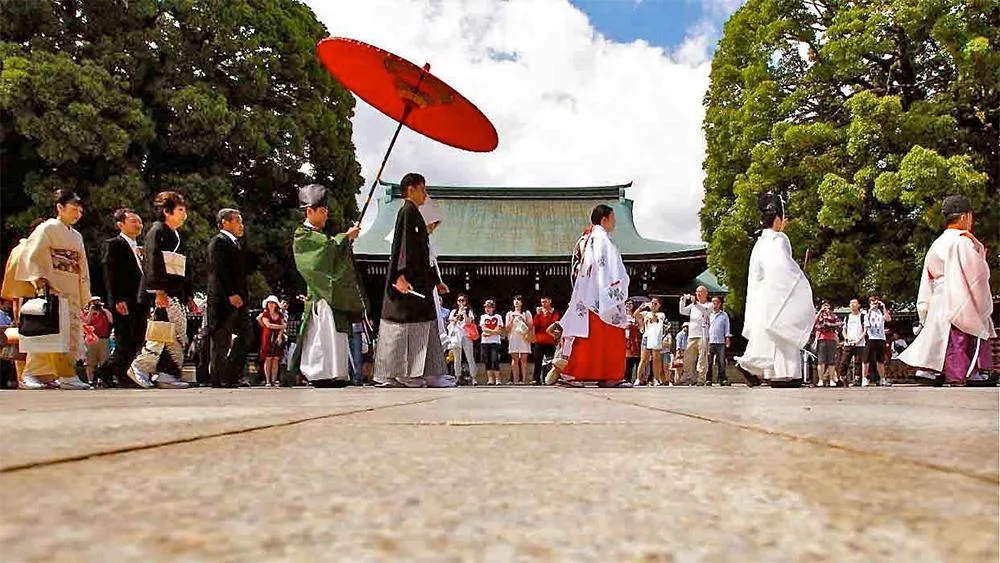
A Shinto wedding procession at the Meiji Shingu shrine.
4. Meiji Jingu shrine, Yoyogi Park, Shibuya
As soon as you walk into the forest and pass under the massive 12-metre high torii gate, made of 1500-year-old cypress, you know what awaits you is going to impress. At the heart of the park, surrounded by 10,000 trees, is the Shinto shrine dedicated to the Emperor Meiji and Empress Shoken, who opened up Japan to the West at the end of 19th century. It takes about 15 minutes to walk from the outer torii gate, through the forest, to another massive torii gate and the cleansing fountain, where if you wish to follow custom you can wash both of your hands with a bamboo ladle, swill out your mouth and clap twice. You are now ready to approach the massive pagoda-shaped shrine. On the weekends, there are often Shinto weddings held here. Ensure you do not cross in front of a wedding procession – it is considered a bad omen for the newlyweds.
Meiji Jingu shrine is at the centre of Yoyogi Park in metropolitan Tokyo, a 20-minute walk from Harajuku stationon the JR Yamanote line.
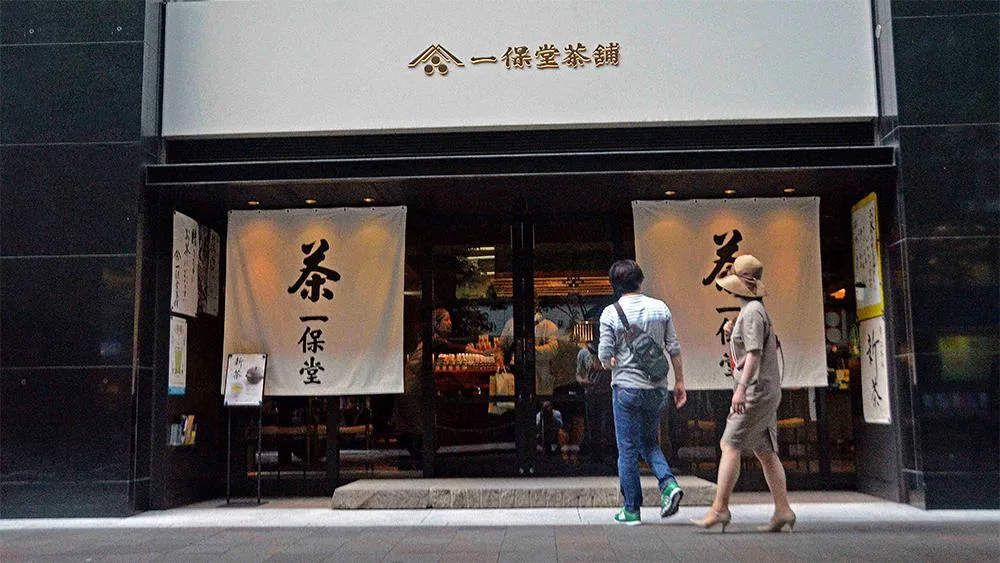
The Ippodo Teahouse, Marunouchi.
5. Ippodo Teahouse, Marunouchi
Green tea is at the heart of Japanese culture and the teahouse is a vital meeting place for the many millions who have no option but to live in small apartments. Rather than invite a friend into their home, people in pint-sized apartments prefer to meet at the local teahouse. The Ippodo Tea Co’s emporium in Marunouchi is a little more sophisticated than the average teahouse, but then it is located at heart of Tokyo’s financial district. With branches in New York and Kyoto, the Ippodo Tea Co has a 300-year-old reputation for selling the finest green tea. In 1846, a prince bestowed his name on the then Kyoto-based purveyor of premium green tea … and it’s never looked back.
Located on Nakadori Avenue, one of the city’s smartest tree-lined streets, a block away from Ladurée, Parisien purveyors of macaroons, it stands in what used to be the Imperial Palace’s outer moat. Hence, its name translates to “inside the circle”. The hardwood interior gives a mellow, convivial atmosphere. You can sample selected teas, specially made for you, in little cups at the bar or ask for a table in the inner sanctum, where friends and courting couples exchange gossip, news and shy glances.
Also on Nakadori Avenue is the Mitsubishi Ickigokan Museum, which specialises in 19th century Western Art and has a collection of 250 works by Toulouse-Lautrec and other artists such as Odilon Redon. Housed in the original 1854 offices of the Mitsubishi Company, it plays to host to international touring exhibitions.
The area is also famous for its upmarket shopping, particularly at the Marunouchi Brick Square centre, where there are traditional restaurants and designer outlets.
Ippodo Teahouse is in Kokusai Building on Nakadori Avenue, a short walk from Toyko Station.
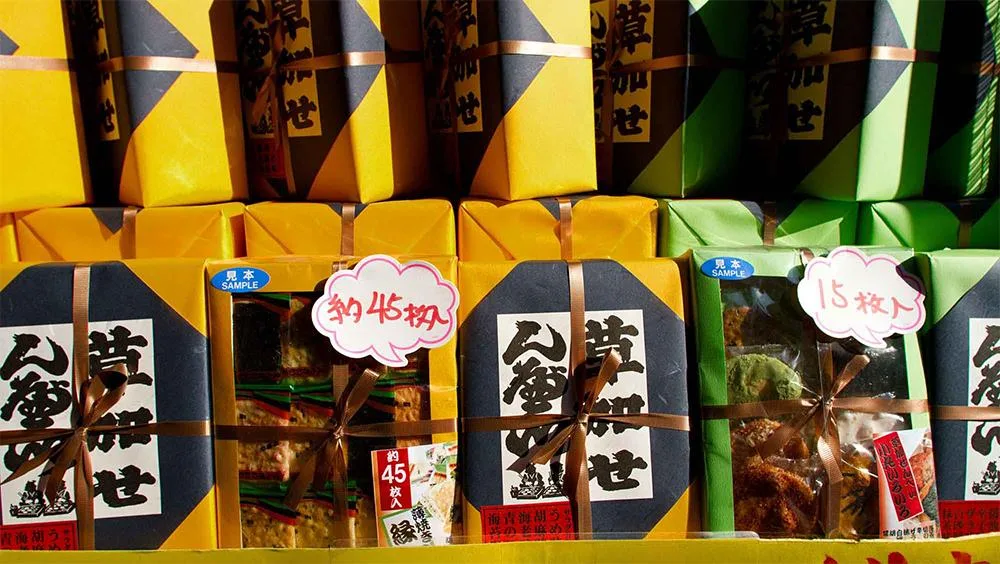
Examples of beautiful gift packaging in a shop at Shibuya Crossing.
6. Shibuya Crossing
This bustling intersection has a familiar feel – New York’s Times Square or Sydney’s Kings Cross (under the blazing Coca Cola sign) spring to mind, except the crowds come on a daily basis to shop in this uber-cool neighbourhood. When the pedestrian lights turn green at the busy junction, they all turn green at the same time in every direction and when the traffic comes to a standstill, the crowds surge onto the crossing from all sides. If you don’t like being part of organised chaos, visit the Starbucks outlet in the Tsutaya building on the crossing’s north side, where you get a great view from the second-storey windows.
After the “scramble”, follow the trendy teens into Shibuya 109, a big mall with more than 120 boutiques, or retrace you steps into Shibuya Station into the Tokyo Food Show, where dozens of spotless counters display gourmet eats, such as seafood rice, grilled eel, fried pork, sashimi, octopus on a stick, seaweed wraps and much more.
To get to Shibuya Crossing, take the JR Yamanote line to Shibuya station and take Hachiko exit.
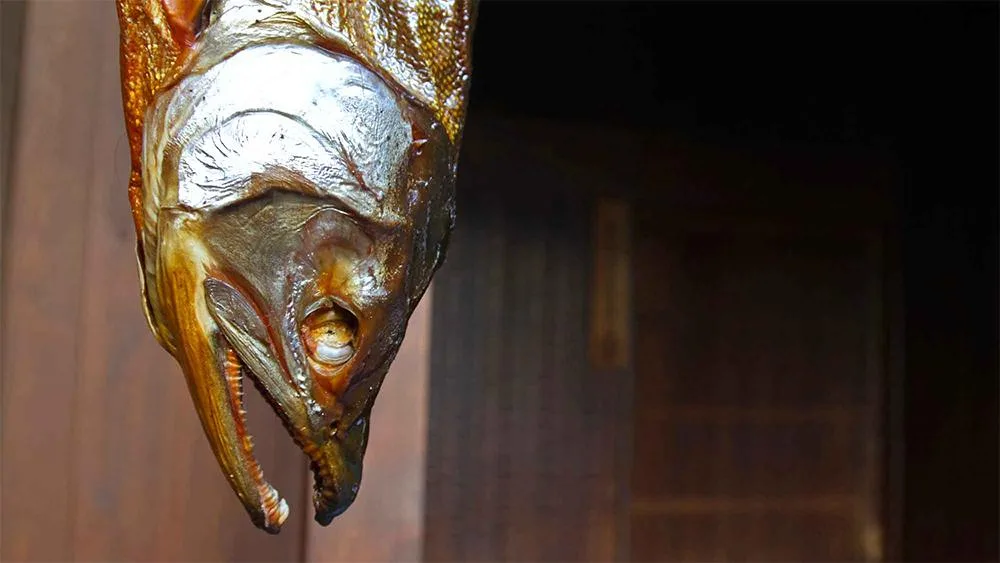
A dried salmon at Tsukiji Fish Market.
7. Tsukiji Fish Market
The world’s largest, busiest fish market (Sydney is the fourth) is the place to catch the pre-dawn live tuna auctions, but those who arrive after 4.30am will have to be content exploring some of the thousand-plus spotless stalls in the outer market that sell every imaginable type of seafood.
A friend arrived at 4am to put his name down on the tuna auction list and found he was number 121 in a queue that accepted only 120. Most mornings you have to arrive between 3am and 3.30am to have any chance of witnessing the auction, when hundreds of giant blue tuna fetch absurd prices. This year, the season’s first tuna auction season saw one fish fetch one billion yen. Worth only a fraction of the price, the entrepreneurial buyer received more than two billion yen of free publicity in the media.
As you stroll around the stalls, create your own seafood tapas by stopping off and sampling what’s on offer. Sometimes stall owners will give you a free sample. If not, it’s fine to buy mouth-sized portions. It’s best to identify what you’re tasting. A friend almost bought what they imagined was a green tea or peppermint ice-cream. It turned out to be sardine ice-cream with dried whale meat sprinkles.
Tsukiji Fish Market is located near the Tsukijishijo Station on the Toei Oedo line and the Tsukiji Station on the Tokyo Metro Hibiya Line. There are two distinct sections of the market. The “inner market” (jōnai-shijō) is the licensed wholesale market, where approximately 900 licensed wholesale dealers operate small stalls and where the auctions and most of the processing of the fish take place. The “outer market” (jōgai-shijō) is a mixture of wholesale and retail shops that sell Japanese kitchen tools, restaurant supplies, groceries, and seafood, and many restaurants, especially sushi restaurants. Most of the shops in the outer market close by the early afternoon, and in the inner market even earlier.
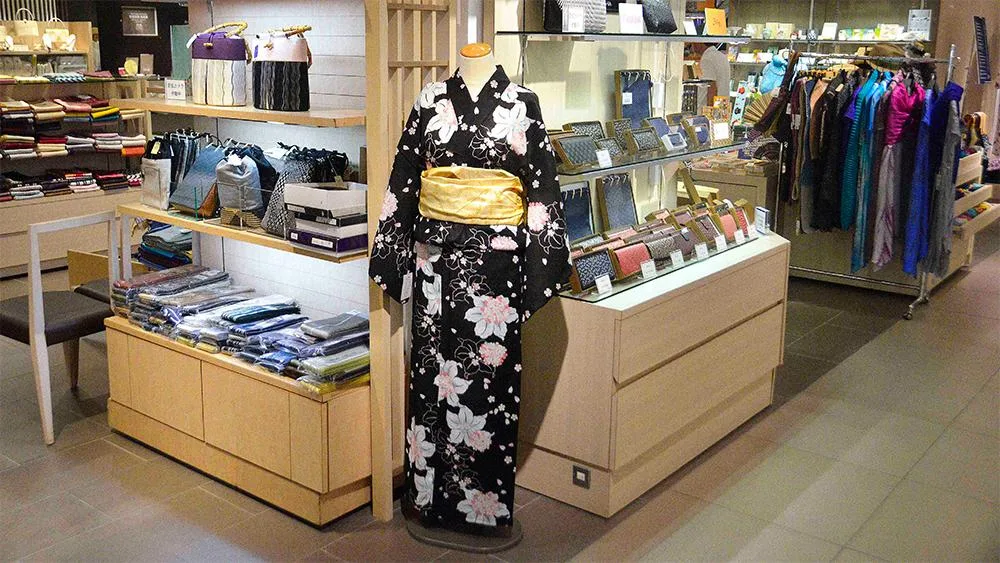
The kimono and yakuta department at Tokyo’s Daimaru department store.
8. Daimaru, Marunouchi
A two-minute walk from Tokyo Station (Yaesu exit) is the world-famous department store, Daimaru, known as Tokyo’s Saks Fifth Avenue. There are 13 levels in this opulent store, from a food hall in the basement, which along with London’s Fortnum & Mason must rank among the top 20 most lavish food halls in the world, to the kimono department on the 10th floor. This is where Japanese ladies come to order their custom-made ensembles. The price tags of the samples on display are as spectacular as the kimonos themselves. The kimono department also stocks a full range of accessories – obi, hair combs, toe socks, thong sandals, purses and fans. You’ll also see many yukata, the lighter, more casual cotton robes, which make great summer dressing gowns. Yukata prices start from around $50; they make great gifts for both genders.
The Daimaru store is at 1 Chome-9-1 Marunouchi, Chiyoda-ku, (03 3212 8011) a minute’s walk from Tokyo Station.

The Oriental Bazaar on Omotesando Street.
9. Omotesando Street & The Oriental Bazaar
Omotesando Street is the Champs Elysees of Tokyo. It’s neater, cleaner and more compact than its Parisien sister with many more shops and malls over a shorter distance. At one end is the 50-hectare Yoyogi Park with a forest of 10,000 trees and the Meiji Jingu shrine; at the other end is Omotesando station on the Tokyo-Ginza metro line – the perfect way to get to Tokyo’s other big-time shopping district, Ginza. One of the retail magnets on Omotesando Street is the Oriental Bazaar – the perfect place to find must-have Japanese gifts for family and friends. A warning for compulsive shoppers – have a good look around before buying otherwise you may regret running out of funds before you find the one thing you want more than anything else. This store is stocked with so many must-have objects d’art, it pays to leave the purse firmly closed until you’ve checked out what’s on offer over the store’s three floors. In the basement are kimonos, T-shirt and fancy goods; on the ground floor, Japanese china and miscellaneous; and on the first floor, antiques, furniture, antiques, classic woodblock prints and screens.
Spend time walking the along Omotesando Street, stopping off for coffee, and visiting Kiddy Land, where you’ll find toys galore, and Omotesando Hills, the upmarket mall, and dozens of other malls and luxury brand outlets.
To get to Omotesando Street & The Oriental Bazaar http://www.orientalbazaar.co.jp/en/ make your way either to the Omotesando station on the Tokyo-Ginza metro line or Harajuku station on the Tokyo Metro Chiyoda line.

The East Gardens at the Imperial Palace.
10. Imperial Palace Gardens, Chiyoda
The main residence of the imperial family sits off limits at the centre of these glorious gardens, but it is the East Gardens that create such a splash of green at the heart of the city and they are open to the public all year round. There are elegant arched bridges over old moats, traditional pavilions, fortified gate houses, sculpted trees, bamboo groves and lakes in 115 hectares of manicured parkland.
During the Edo period between 1603 and 1868, great walls and moats encircled the gardens and it is said that Mt Fuji could be seen from the castle tower on a clear day. Now all that remains of the tower is a monumental platform of stone blocks and the view of Fuji’s sacred peak has been blocked long ago by the city’s high-rise skyline.
The garden is well worth a visit all year round, but is especially beautiful in April, when the cherry trees are in blossom or, in October, when the maples turn brilliant red and gold. Twice a year – on New Year’s Day and December 23, the Emperor’s birthday – the inner palace grounds are open to the public, who turn out en masse to be greeted from a balcony by the Imperial family.
There are several entrances to The Imperial Palace Gardens, which are open daily from 9am to 4.30pm (from mid-April through August, until 5pm; from November through February, until 4pm. Admission is free.)

Tokyo’s extensive metro is easy to use and can be identified by the blue sign.
**Tokyo Metro and Toei Subway – so easy to use!
**
Do you know the etiquette of using the subway in Tokyo. Such as … it’s an absolute no-no to eat, drink or use your mobile in the carriages … and believe me, you see no one but a few foreign travellers doing so.
Tokyo Metro and Toei Subway operate the subways in this city and they make it very easy for visitors. At the entrance of each station, you will see the subway sign (above) and when you arrive at the ticket machines, you’ll discover it’s one of the most user-friendly systems in the world.
The ticket machines have step-by-step guides in English, give change and receipts. Every line has a distinctive colour and every station an individual number. Before the trains arrive and depart at each station, announcements in English and Japanese are made inside the train and on the platforms.
Be sure to remember the station name, number and line colour (circular coloured outline) of the subway line you want to ride. You will see the combination of a letter (representing the line) and a number (representing the station) within a circular coloured outline (representing the colour of the line), which is called a station number.
A comprehensive guide in English on how to use the Tokyo Metro and Toei Subway, from how to board to train to subway manners, can be found on line – by clicking on the underline, above.

